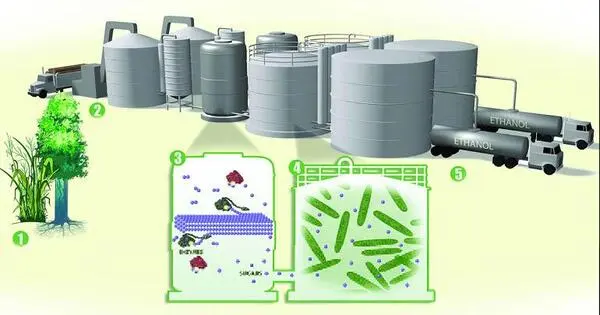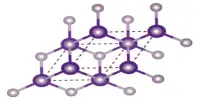Cellulosic ethanol is ethanol (ethyl alcohol) made from cellulose (a plant’s stringy fiber) rather than the plant’s seeds or fruit. It is a form of biofuel made from cellulose, a complex molecule present in plant cell walls. It can be made from grasses, wood, algae, or other plants. It is commonly discussed for usage as a biofuel. Because the carbon dioxide that plants absorb as they develop balances some of the carbon dioxide generated when ethanol made from them is burned, cellulosic ethanol fuel has the potential to have a lower carbon footprint than fossil fuels.
In contrast to first-generation biofuels such as corn ethanol, which is derived from the starch in corn kernels, cellulosic ethanol is derived from non-food feedstocks such as agricultural residues (such as corn stover and wheat straw), woody biomass (such as forestry residues and energy crops), and even certain types of municipal solid waste.
Cellulosic ethanol is gaining popularity due to its potential to replace ethanol derived from corn or sugarcane. Because these plants are also used to make food, diverting them for ethanol production may raise food prices; cellulose-based sources, on the other hand, do not compete with food because the fibrous sections of plants are mainly inedible to humans.
The process of producing cellulosic ethanol typically involves the following steps:
- Feedstock Preparation: The cellulose, lignin, and hemicellulose-rich feedstock is gathered and prepared. This may entail chopping, shredding, or otherwise breaking down the feedstock into a more processable form.
- Pretreatment: The pretreatment phase is critical for breaking down the complex structure of the feedstock’s cellulose, hemicellulose, and lignin. Heat, acid, or enzymes can all be employed to make cellulose more accessible for enzymatic breakdown.
- Enzymatic Hydrolysis: Enzymes are added to the pretreated feedstock during this process to break down the cellulose into its constituent sugars, principally glucose. This enzymatic process is critical in the transformation of cellulose into fermentable sugars.
- Fermentation: The sugars obtained from enzymatic hydrolysis are fermented by microorganisms (usually yeast or bacteria) to convert them into ethanol. During this process, the microorganisms consume the sugars and produce ethanol and carbon dioxide as byproducts.
- Distillation and Dehydration: The resulting fermentation broth contains a mixture of ethanol and water. Distillation is used to separate the ethanol from water and other impurities. Dehydration processes may also be employed to remove the remaining water from the ethanol.
Cellulosic ethanol has several advantages compared to traditional corn ethanol:
- Sustainability: It is made from non-food feedstocks, reducing the competition for food resources.
- Reduced Greenhouse Gas Emissions: The production of cellulosic ethanol typically results in fewer greenhouse gas emissions compared to fossil fuels.
- Waste Utilization: It can utilize agricultural and forestry residues, reducing waste and promoting sustainability.
Another possible benefit is the variety and diversity of cellulose supplies; grasses, trees, and algae can be found in practically every ecosystem on Earth. Even municipal solid waste components such as paper might theoretically be converted into ethanol. Cellulosic ethanol’s main present disadvantage is its high manufacturing cost, which is more complex and needs more stages than corn- or sugarcane-based ethanol.
However, high production costs, technological problems, and scale-up issues have hampered cellulosic ethanol manufacturing. To overcome these problems and improve the commercial feasibility of cellulosic ethanol as a renewable and ecologically friendly alternative to fossil fuels, research and development efforts have been underway.















